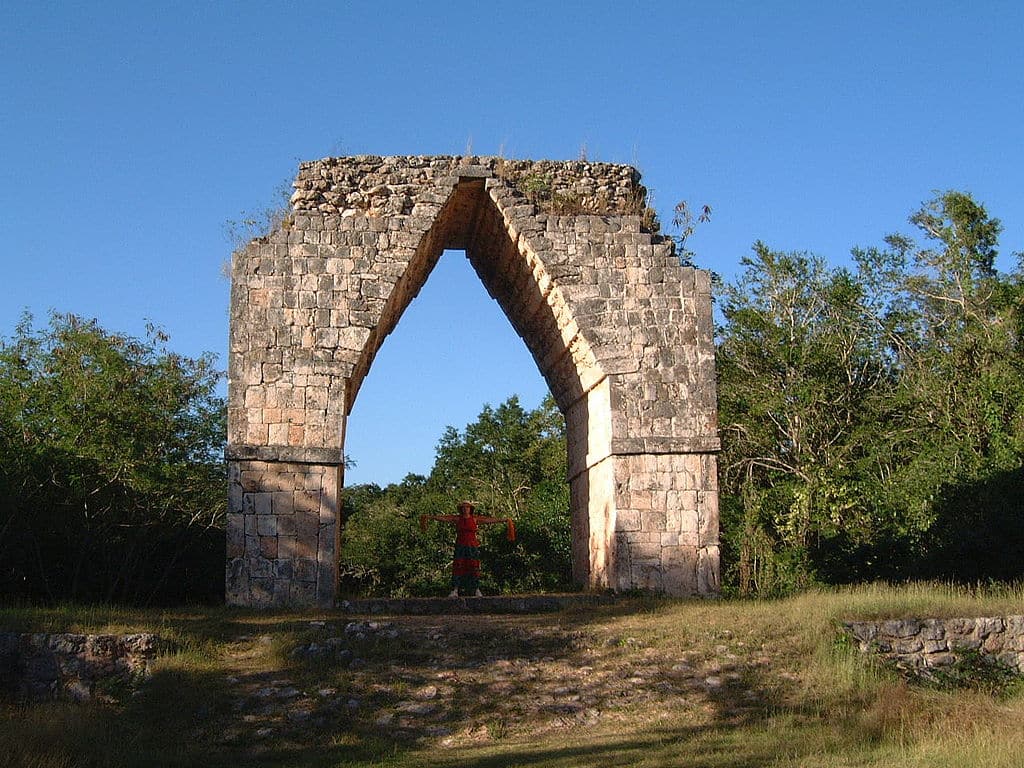Kabah in Yucatan

Kabah in Yucatan means in Mayan “Lord of the strong or powerful hand”. It is a place where the splendor of the Maya Puuc style past is all around. The ruins extend on both sides of the main road. Although only some of the buildings are open to the public, there is much to explore at the site. The archaeological zone shines because of its strategic location and the quality of the carved stones that embellish its constructions.
Kabah in Yucatan: What to expect
Upon entering, there is a small housing complex with a central temple. To the right is Kabah’s most famous structure, the Palace of the Masks. It sits on a low platform, also known as Codz Pop, perhaps because of the huge hooked noses on the masks. The façade of the building is an incredible sight, covered by almost 300 masks of Chaac, the rain god. This massive repetition of a single set of elements is unusual in Mayan art, the detail and work on each piece is astounding. Directly in front is the Altar of the Glyphs. It lays between many stones carved with glyphs. The Kabah Archaeological Zone is a place where you can breathe the splendor of the Puuc’s Maya past.
A Mayan wonder
Although only a part of the buildings that make up Kabáh have been reconstructed, the complexity of the structures is such that it is considered to have been a city comparable to Uxmal, with which it is closely related.
One of the simplest structures of the archaeological site, a monumental arch of Mayan vault, marks the beginning of the sacbé or Mayan path of 18 kilometers long and five meters wide that linked Kabáh with Uxmal. In addition, a legend assures that the dwarf who ruled Uxmal was originally from Kabáh.
The construction shows two pillars with simple molding in the superior part, from which the Mayan vault develops. It was a portal that marked, in a simple and at the same time majestic way, the political and territorial link between Kabáh and Uxmal.
Puuc architecture
The characteristics of the Puuc architecture are: smooth walls of assembled stone in exteriors and interiors, including the vault or false arch typical of the Mayan culture; decoration based on small columns, mainly in the bases where the temples are deployed and in some facades; cornices of double profile, smooth boards or with mosaics, with geometric, zoomorphic or anthropomorphic motifs in the second body of the buildings.
Kabáh is located 23 km. southeast of Uxmal on Highway 261; turn right at km. 16, and 140 km. south of Mérida.
